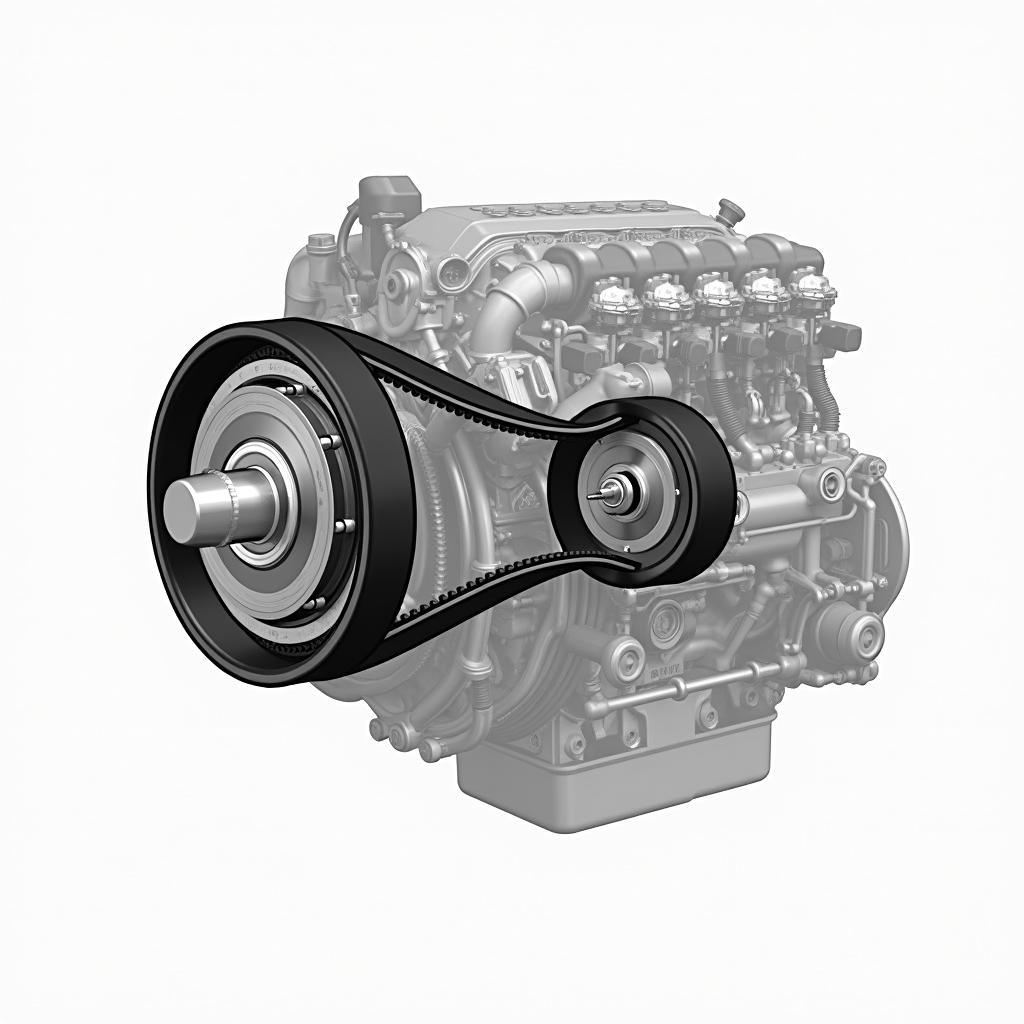The timing belt replacement on the Audi A2 is an essential maintenance point that should not be neglected. A broken timing belt can lead to engine damage whose repair costs can exceed the value of the vehicle. In this article, you will learn everything you need to know about the Audi A2 timing belt replacement, from costs and replacement intervals to helpful tips.
What is a Timing Belt and Why is it So Important?
The timing belt is a flexible rubber belt fitted with teeth. It connects the crankshaft to the camshaft and ensures that the valves open and close at the correct moment. This allows the fuel-air mixture to be ignited in the combustion chamber and enables the engine to develop its power.
 Diagram illustrating the function of the timing belt in an Audi A2 engine
Diagram illustrating the function of the timing belt in an Audi A2 engine
A broken timing belt causes the engine timing to fail, and the valves can strike the pistons. This can lead to severe damage to engine parts such as valves, pistons, and the cylinder head. The repair costs for such engine damage are typically very high and can exceed the value of the vehicle.
When Should the Timing Belt Be Replaced on the Audi A2?
Audi specifies fixed replacement intervals for the timing belt on the A2. These range from 60,000 to 120,000 kilometers or every 5 to 6 years, depending on the engine type and year of manufacture. You can find the exact details in your vehicle’s service manual.
It is important to adhere to these intervals, even if the timing belt appears visually sound. This is because the timing belt is subject to natural wear and tear and can become brittle and porous over time. External factors such as heat, cold, and oil can also negatively affect the timing belt’s lifespan.
How Much Does an Audi A2 Timing Belt Replacement Cost?
The costs for a timing belt replacement on the Audi A2 vary depending on the workshop and region. On average, you should expect costs between 400 and 800 Euros.
It is usually cheaper to have the timing belt replaced at an independent workshop than at an authorized dealership. However, you should ensure that the workshop has experience with Audi vehicles and uses high-quality replacement parts.
What Should You Watch Out For During a Timing Belt Replacement?
When having the timing belt replaced, you should absolutely ensure that the workshop also replaces the tensioner pulley and the water pump. These parts are also subject to wear and tear and can, in the worst case, lead to engine damage if they are not replaced in time.
“The water pump is often driven by the timing belt. Replacing both components simultaneously saves labor time and thus costs,” explains Michael Schmidt, a master mechanic from Berlin.
What Symptoms Can Indicate a Defective Timing Belt?
A defective timing belt can manifest itself through various symptoms, such as:
- Unusual engine noises, e.g., a loud clicking or rattling
- Loss of engine power
- Difficulty starting the engine
- Check engine light illuminates
Should you notice any of these symptoms in your Audi A2, you should immediately visit a workshop.
Conclusion
Timing belt replacement is an important maintenance point for the Audi A2 that should not be neglected. Timely replacement protects you from costly engine damage. Adhere to the replacement intervals and have the timing belt, tensioner pulley, and water pump replaced at a specialized workshop.
Do you have questions about the timing belt replacement on your Audi A2?
Feel free to contact us via our website. Our automotive experts will be happy to advise you and help you with any questions about your vehicle.
